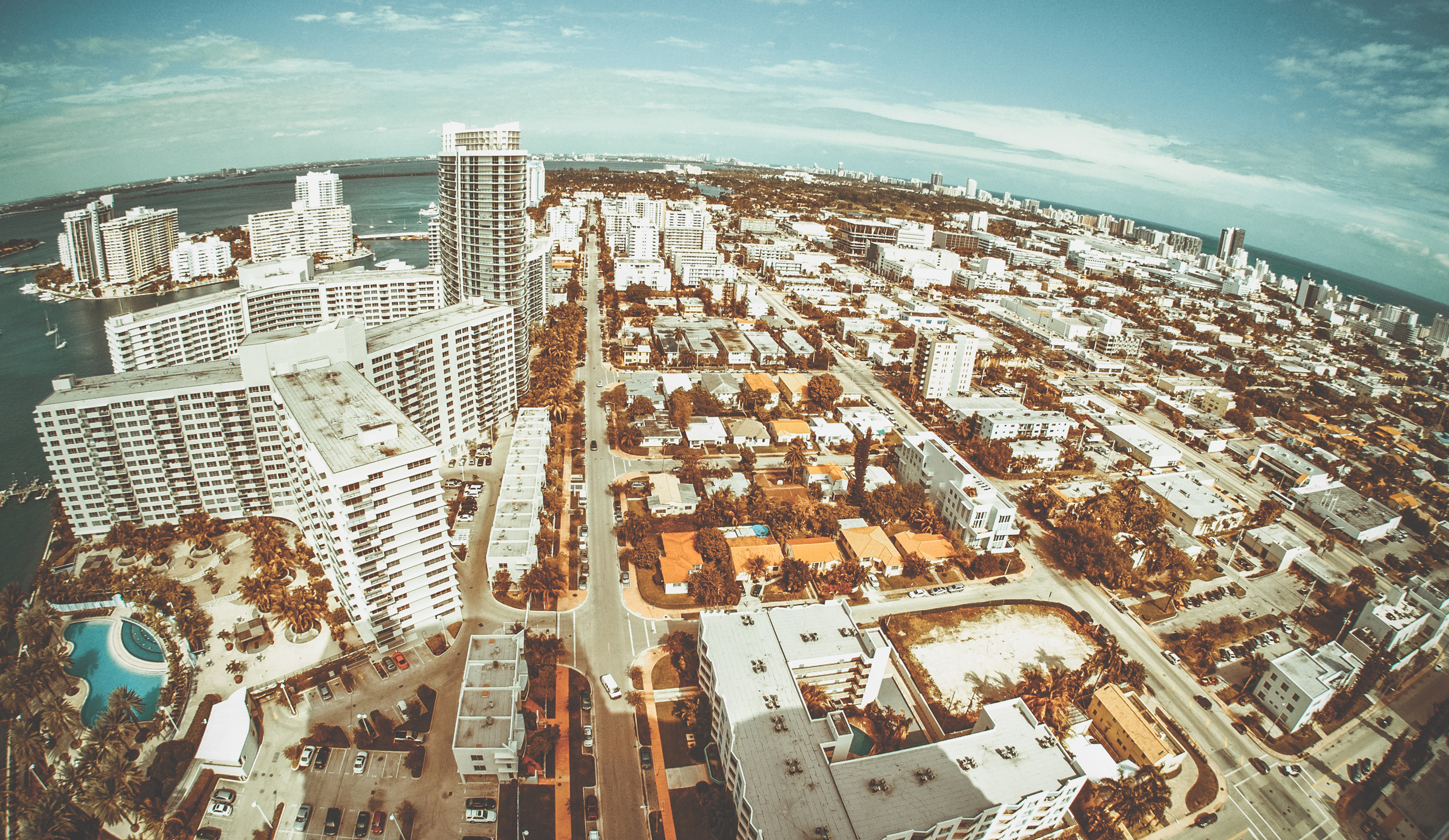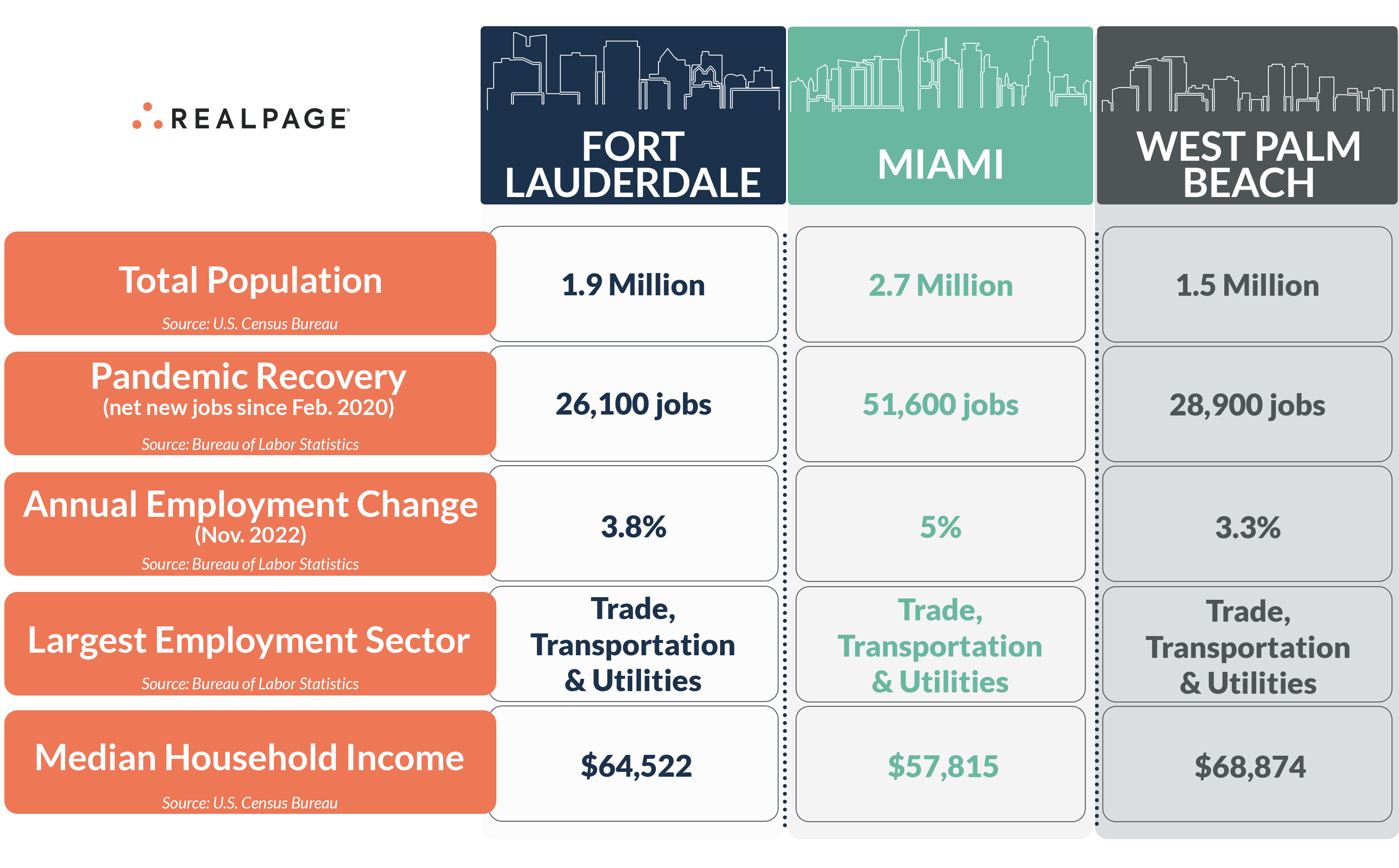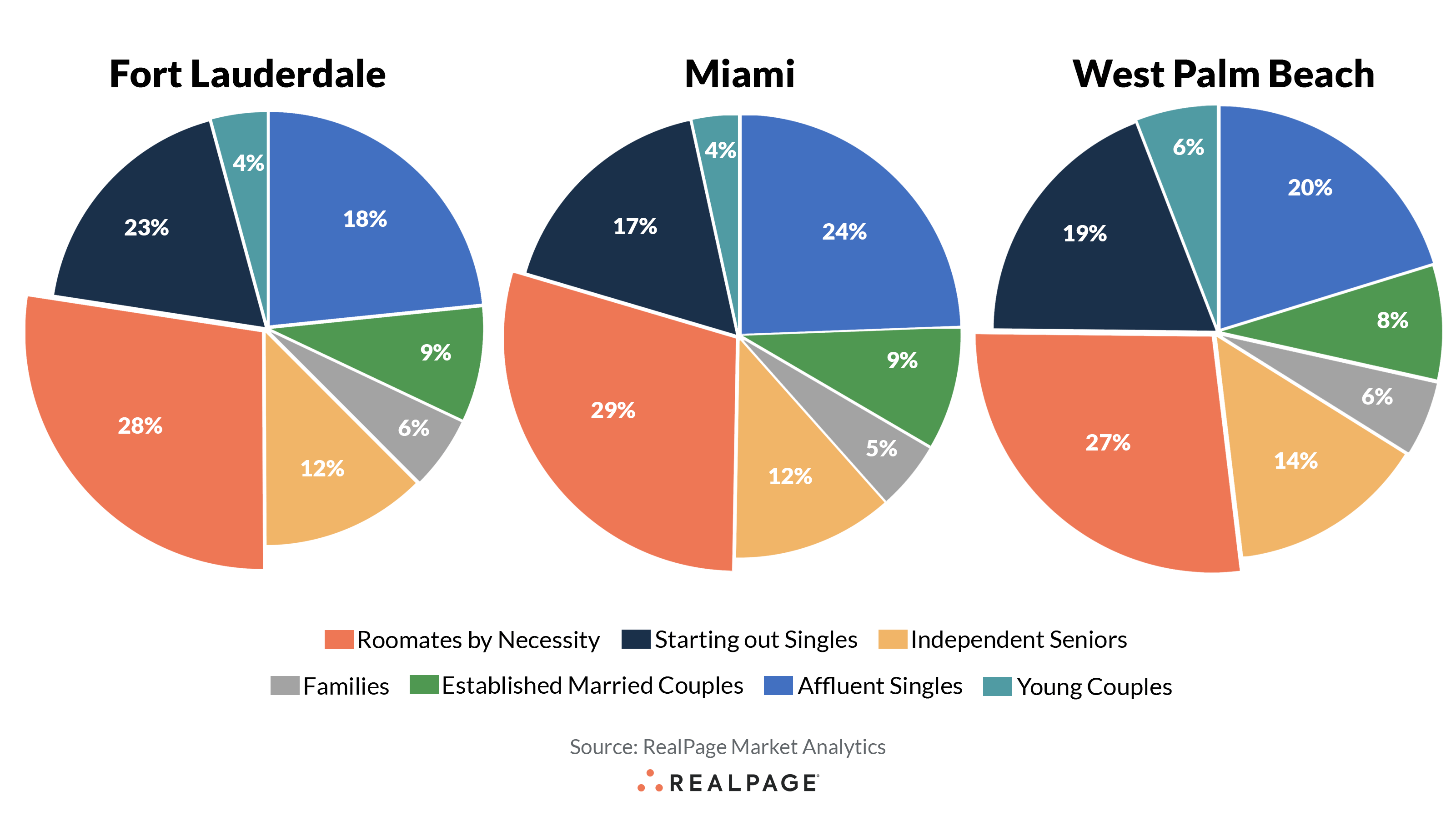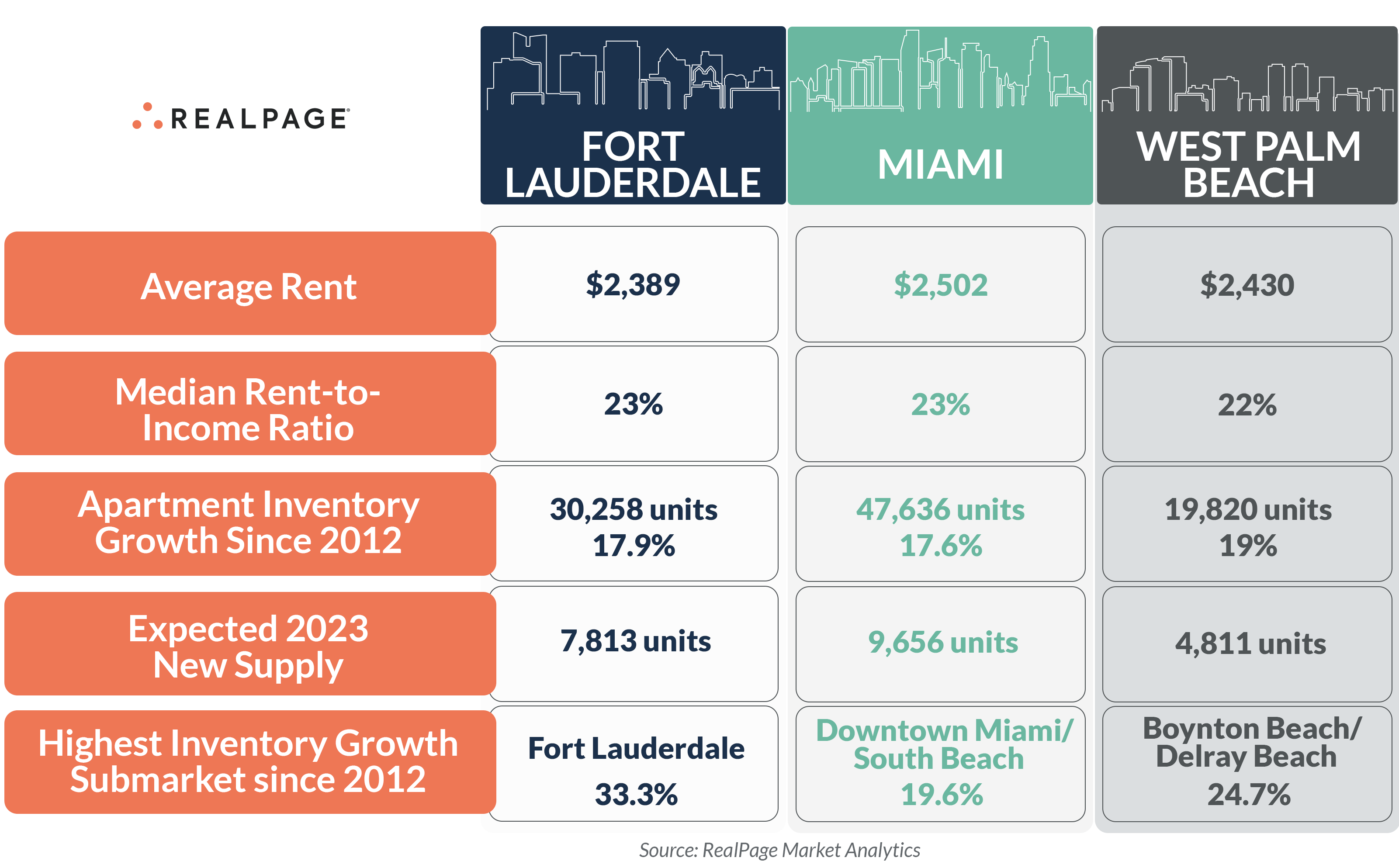Apartment Market Comparison: The South Florida Trio

Miami is a coastal metropolis and the second-most populous city in Florida. West Palm Beach is known for its natural beauty and palm trees, while Fort Lauderdale boasts affordable beach vacations and boating canals.
These neighboring apartment markets combine to make up the South Florida region. While very similar in demographic makeup and economic strength, there are slight differences in these markets. Over the next several weeks, RealPage Market Analytics will be exploring the similarities and differences of neighboring apartment markets.
Miami is a national leader – behind only New York – in international migration patterns. Fort Lauderdale and West Palm Beach also tend to log notable in-migration from outside the U.S., but the numbers there are much smaller. This steady population influx boosts the regional economy, keeps apartment occupancy tight and allows for apartment rent hikes notably above of the national norm.
Miami-Dade County boasts the region’s largest population with 2.7 million residents, according to data from the U.S. Census Bureau. Fort Lauderdale has a little less than 2 million people, while the population in West Palm Beach is the smallest in the region, estimated at 1.5 million residents.
All three South Florida markets have recovered well from pandemic-era job cuts, led by Miami. Total employment in Miami as of December 2022 came in 51,600 jobs over the total job count from before the pandemic in February 2020, according to data from the Bureau of Labor Statistics. Fort Lauderdale and West Palm Beach have also recovered, but the job counts there are less than 30,000 positions above pre-pandemic norms.
The median household income across South Florida hits about in line with the U.S. average of roughly $69,000, according to five-year estimates from the U.S. Census Bureau. West Palm Beach – which also has the biggest population of residents with bachelor’s degrees – has the largest median income at about $68,900, while Fort Lauderdale is not far behind at roughly $64,500. Miami comes in a bit lower at about $57,800.
Rent-to-income ratios in South Florida are also in line with the national norm of 23%, according to the latest data from RealPage Market Analytics. Effective asking rental rates in these markets tend to run high, at least $600 above the national average. As of January, prices were the most expensive at $2,500 in Miami, while rates were $2,430 in West Palm Beach and nearly Beach and nearly $2,400 in Fort Lauderdale.
When looking at the makeup of the resident base, two big renter cohorts stand out in South Florida. Roommates by Necessity is the largest segment of the renter base here, accounting for nearly 30% in all three markets. Affluent Singles is another big contender, with a little over 20% of the local population hitting in that category.
Apartment supply across South Florida has ballooned in the past decade. Deliveries were the most significant in Miami, with over 47,600 units built in the past ten years, increasing the existing stock by 17.6%. New supply totaled nearly 30,260 units in Fort Lauderdale, resulting in a surge of 17.9%. Meanwhile, West Palm Beach saw the fewest apartment additions (19,820 units) and the biggest inventory increase (19%). The urban core submarkets tended to be the highest construction areas in these markets in the past decade.
Developers are scheduled to deliver another 22,000 or so units across the South Florida region in 2023. Miami will again see the biggest volume of new apartment additions with nearly 9,700 new units coming online. Meanwhile, Fort Lauderdale is scheduled to see 7,800 units finished this year and West Palm Beach will receive 4,800 more units.
Next, explore the similarities and differences of neighboring apartment markets Dallas and Fort Worth.









